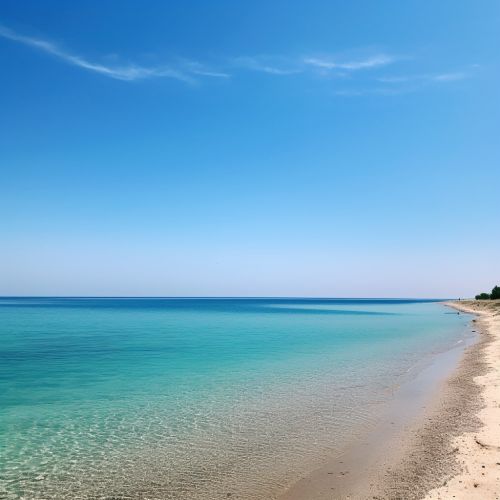Caspian Sea
Geography
The Caspian Sea is the world's largest inland body of water, located between Europe and Asia. It is bordered by five countries: Russia to the north, Azerbaijan to the west, Iran to the south, and Turkmenistan and Kazakhstan to the east. The sea has a surface area of approximately 371,000 square kilometers and a maximum depth of about 1,025 meters.


The Caspian Sea is an endorheic basin, meaning it has no natural outlets. It receives water from over 130 rivers, the largest of which is the Volga River. The sea's salinity is about one-third that of the world's oceans.
Geology
The Caspian Sea is situated in an active tectonic zone. The sea's formation is the result of a tectonic depression during the early Miocene Epoch. The depression was filled by the ocean, which eventually evaporated, leaving behind a large salt deposit. The sea is divided into three distinct physical regions: the Northern Caspian, the Middle Caspian, and the Southern Caspian. The Northern Caspian is the shallowest part, while the Southern Caspian is the deepest.
Climate
The Caspian Sea has a varied climate, with the northern region experiencing cold winters and hot summers, and the southern region having a more mild, subtropical climate. The sea's large size and depth influence the climate of the surrounding regions, creating a unique microclimate.
Biodiversity
The Caspian Sea is home to a diverse range of species, many of which are not found anywhere else in the world. The sea is particularly known for its sturgeon population, which produces the world's finest caviar. However, overfishing and pollution have led to a significant decline in sturgeon numbers.
Economy
The Caspian Sea region is rich in natural resources, including oil, gas, and fish. The sea is a major route for the transportation of goods between Europe and Asia. The extraction of oil and gas from the sea's basin has been a source of conflict among the bordering countries.
Environmental Issues
The Caspian Sea faces several environmental challenges, including pollution, overfishing, and the impact of climate change. Efforts are being made to address these issues and preserve the sea's unique ecosystem.
